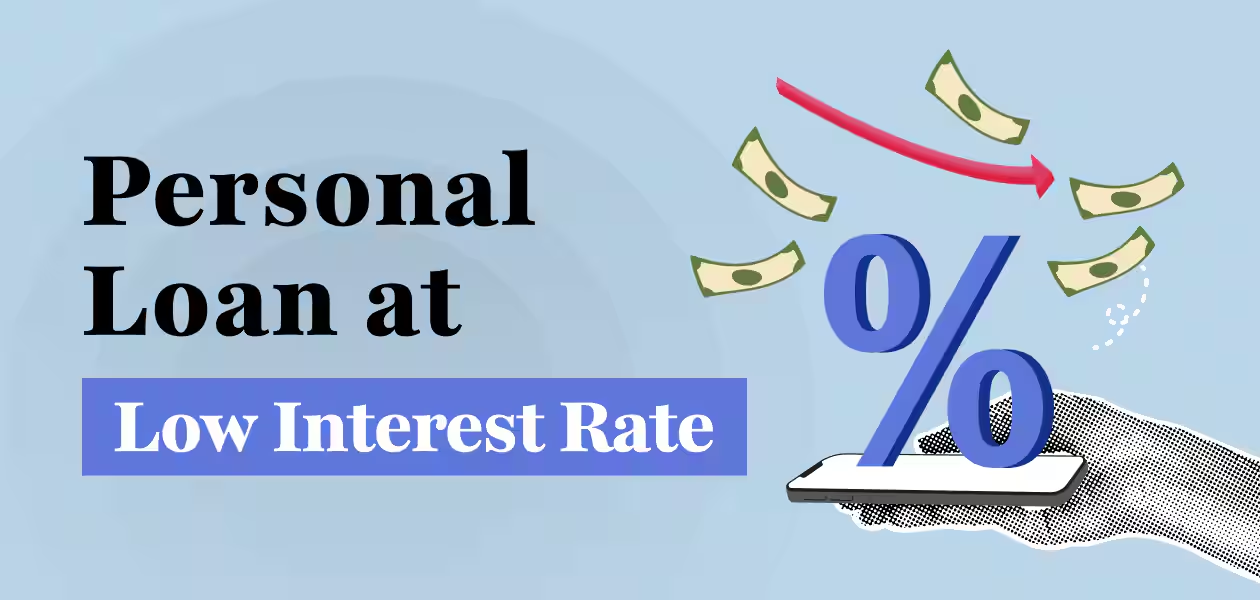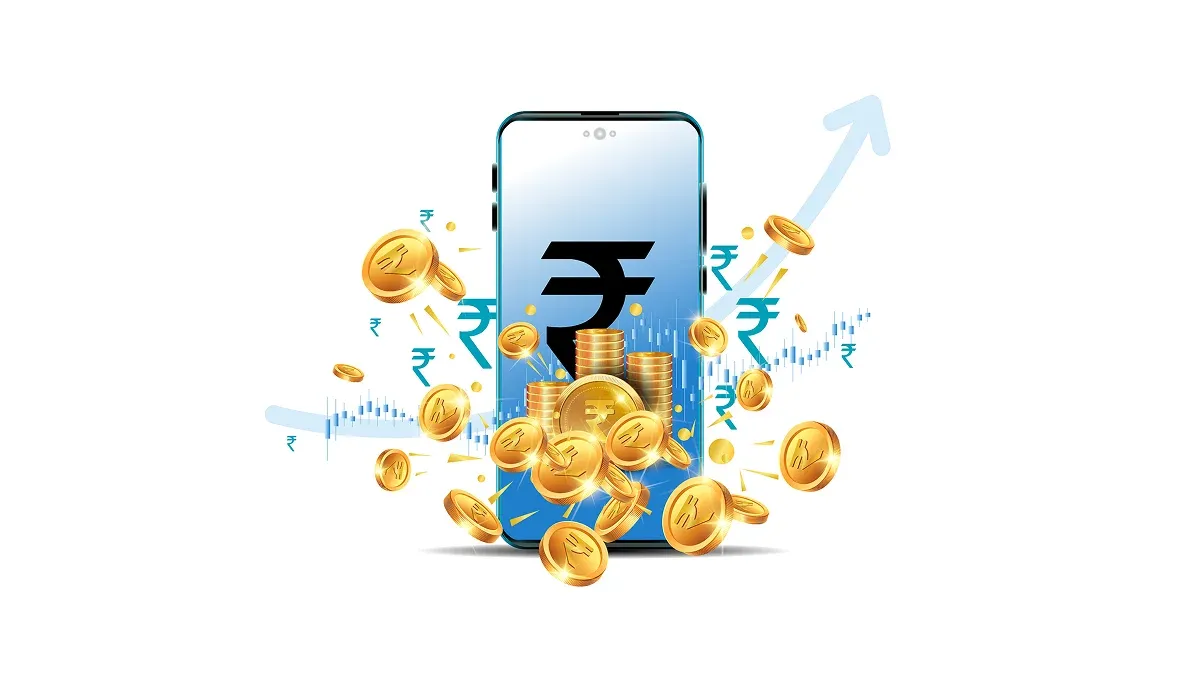Lowest Personal Loan Interest Rates in India 2025: Compare Top Banks and NBFCs Lending Rate
Written by Dev Sethia
Published on November 13, 2025 | 6 min read

Lowest Personal Loan Rates Compared: Banks, NBFCs
As the personal loan market is growing rapidly in India, borrowers today are interested in finding the best interest rate possible prior to applying for a loan. In the past, it was tedious and cumbersome to compare personal loan offers from various banks.
However, loan comparison digital platforms allow consumers to see and compare personal loan interest rates across a selection of Banks and NBFCs. This makes it easier for borrowers to select the offer that best fits their profile and eligibility criteria.
Using Upstox allows borrowers to compare personal loan rates across 30 lenders on one platform. As interest rates will differ across lenders as they rely on their policies and risk assessment models, this comparison tool makes the process easier. In the past, it would require borrowers to determine the best offer from each bank, which brought inefficiencies to the process.
Personal Loan Interest Rates from Leading Banks and NBFCs
The latest personal loan interest rates offered by top banks and NBFCs are provided in the table below for easy reference and comparison.
| Bank/NBFC | Interest Rates |
|---|---|
| HDFC Bank | 9.99% - 12.5% |
| Axis Bank | 9.99% - 17.15% |
| ICICI Bank | 11.00% - 13.00% |
| Kotak Mahindra Bank | 9.98% - 17.20% |
| IndusInd Bank | 10.35% - 16.5% |
| IDFC FIRST Bank | 9.99% p.a onwards |
| Federal Bank | 12.00% - 19.50% |
| YES Bank | 13.00% - 16.00% |
| Tata Capital | 11.99% - 13.99% |
| Aditya Birla Finance | 10.99% p.a. onwards |
| L&T Finance | 11.00% p.a. onwards |
| State Bank of India | 10.05% - 15.05% |
| Bank of Baroda | 10.40% - 18.10% |
| Bank of India | 11.10% - 16.15% |
| Canara Bank | 9.95% - 15.40% |
| Punjab National Bank | 10.50% - 17.05% |
| Union Bank of India | 10.35% - 14.45% |
| Punjab & Sind Bank | 9.85% - 12.90% |
| Indian Overseas Bank | 10.50% onwards |
| UCO Bank | 10.20% - 13.45% |
| Bank of Maharashtra | 9.00% - 13.80% |
| Central Bank of India | 9.90% - 11.80% |
| HDB Financial Services | 10.00% - 35.00% |
| Muthoot Finance | 14.00% - 22.00% |
| Shriram Finance | 11.00% - 42.00% |
Finding the Best Personal Loan Rates
Interest rates for personal loans vary between banks and financial institutions. There are several factors that impact the available rate for a specific loan, including but not limited to the applicant’s credit history, employment type, and income.
One lender may advertise a very low rate for government employees, whereas another lender will advertise better rates for applicants demonstrating strong or stable income or repayment capabilities.
Experts recommend that borrowers compare interest rates offered by competing lenders before applying for a loan, as this simple exercise can save tremendous amounts over the length of the loan. An interest rate that is even just a few basis points less than the competition could add up to considerable savings in EMI and total interest out.
Key Factors Influencing Personal Loan Interest Rates
Personal loan interest rates are affected by a multitude of factors pertaining to the cost of funds for the lender and the financial position of the borrower. Below are the major factors that affect the way lenders set personal loan interest rates:
Credit Score
The credit score is one of the main factors in determining a personal loan interest rate. The score indicates an individual’s credit history and repayment history. Generally, lenders see anyone with a score of 750 or better as someone who is financially responsible and less likely to default on the loan. Therefore, those who qualify will typically receive a loan with a lower interest rate.
Income Level
When a lender compares borrowers, those with high monthly incomes are considered lower-risk customers to the lender. Higher incomes can improve a borrower’s debt-to-income ratio, which plays a significant role in potential eligibility and determining the interest rate of a loan.
Occupation Profile
When determining personal loan interest rates, lenders can distinguish between salaried vs self-employed clients. Typically, salaried professionals (especially government employees or PSUs) are charged a lower interest rate for the job-specific income security. Compared to self-employed or private occupation applicants, those with salaried jobs typically have more job stability and security, which lenders appreciate.
Existing Customer Relationships
If the borrower has a prior history with the bank or NBFC, a satisfactory existing customer relationship can pregnant the borrower. An existing customer relationship must be disclosed, and if it is honored, the borrower is typically awarded a competitively low interest rate.
Job Stability
The applicant’s employment history is important for determining interest rates. Borrowers who change jobs frequently or have a history of unstable employment records are often higher risk and may have higher interest rates or have difficulty qualifying for loans.
Why Credit Profile is the Most Important
Ultimately, the borrower's credit profile will dictate eligibility and interest rates on their loan. Borrowers who have a solid history of payments and credit history are much more likely to access lower rates. Lenders perceive these borrowers as safe, reducing the lender’s credit risk and allowing the lenders to offer better loan terms.
Consumers with credit scores below 700 may have difficulty obtaining loans from the mainstream banks and large NBFCs because those lenders prefer borrowers with strong credit profiles. But there are specialised NBFCs that will consider borrowers with weaker credit profiles. These lenders may approve much smaller amounts, and will generally charge higher rates of interest to compensate for the increased credit risk.
Borrowers can make better financial decisions by comparing personal loan interest rates through online websites.
If they evaluate offers, keep credit healthy and maintain a stable income, applicants will acquire lower rates, quicker approvals, and better EMI affordability, which ultimately leads to better financial health and responsible borrowing.
FAQs
How can I get the lowest interest rate on a personal loan?
To get the lowest rate feasible, try to keep your credit score (over 750), income stability, and see what multiple banks and NBFCs are offering on an application like Upstox before applying.
What factors determine personal loan interest rates?
Interest rates are determined by a variety of things, including the factors of credit score, income, occupation type, stability of employment, and the relationship the borrower has with the lender.
Do salaried and self-employed applicants get the same interest rates?
No, typically salaried employees, especially those employed by government or PSU, will receive lower interest rates compared to a self-employed person, who will pay a slightly higher rate, which is more of a factor of their variable income situation.
Can my relationship with a bank help me get better loan rates?
Yes, the ability to stay on the books and be a long-time customer of the bank matters as they give preference rates or pre-approved loans at lower rates to the existing customer with salary accounts, deposits, or credit cards.
What happens if I have a low credit score?
Low-credit-score (below 700) applicants may find it difficult to receive loan approval from banks. Some NBFCs may offer a loan, however the amounts may be smaller and the interest rate higher.
Can income level affect my personal loan interest rate?
Yes, generally, higher and more consistent monthly income levels are viewed as lower risk borrowers, and lenders tend to offer lower interest rates than if it were the opposite situation and the borrower had lower income levels.
Why should I use a loan comparison platform?
Loan comparison platforms allow borrowers to compare their personal loan offers from 30+ lenders in one place to help borrowers compare their most aesthetically appealing and affordable loans based on their eligibility levels.
About Author
Dev Sethia
Sub-Editor
a journalism post-graduate from ACJ-Bloomberg with over three years of experience covering financial and business stories. At Upstox, he writes on capital markets and personal finance, with a keen focus on the stock market, companies, and multimedia reporting. When he’s not writing, you’ll find him on the cricket pitch
Read more from DevUpstox is a leading Indian financial services company that offers online trading and investment services in stocks, commodities, currencies, mutual funds, and more. Founded in 2009 and headquartered in Mumbai, Upstox is backed by prominent investors including Ratan Tata, Tiger Global, and Kalaari Capital. It operates under RKSV Securities and is registered with SEBI, NSE, BSE, and other regulatory bodies, ensuring secure and compliant trading experiences.

























